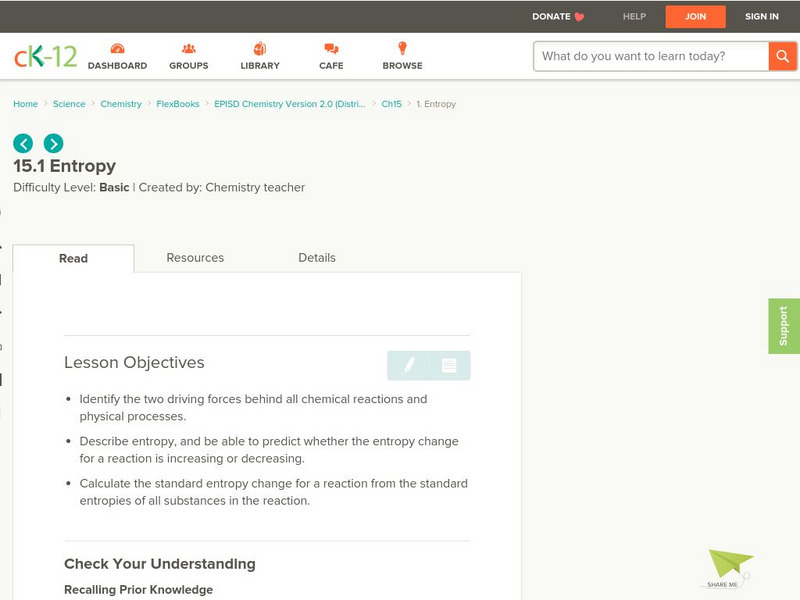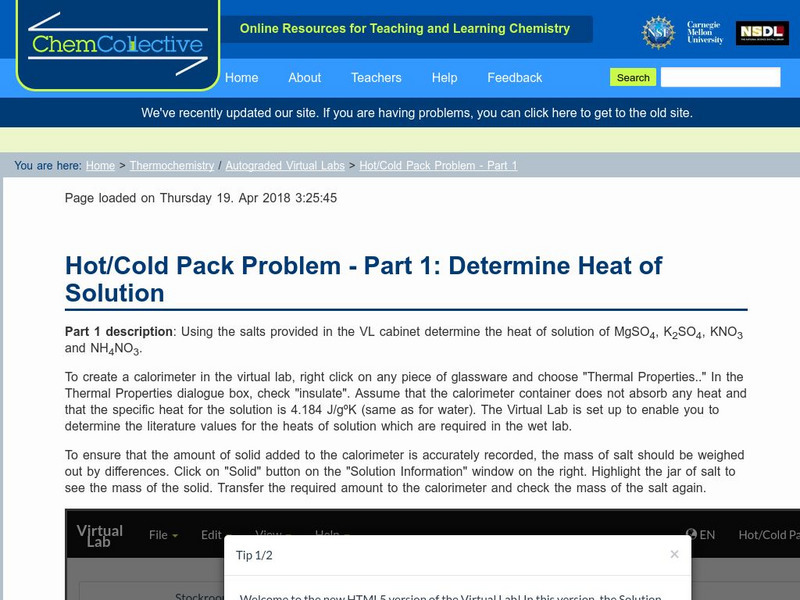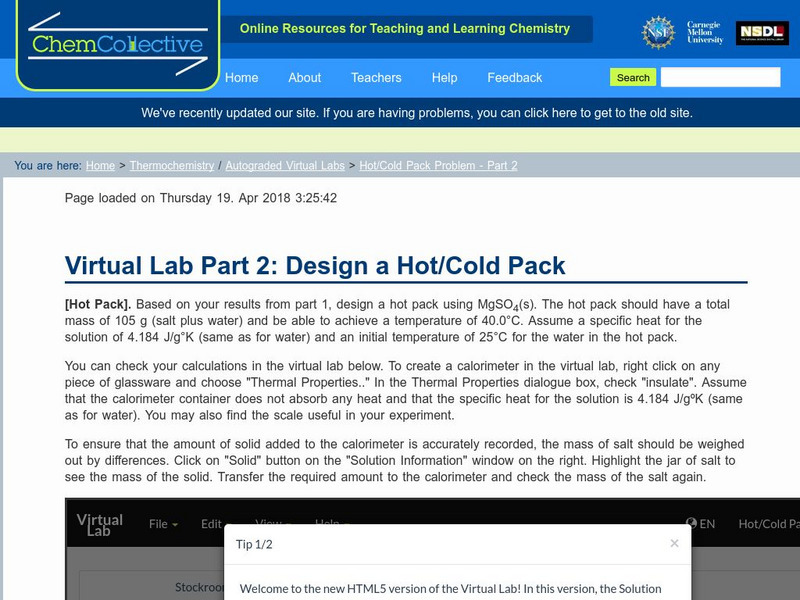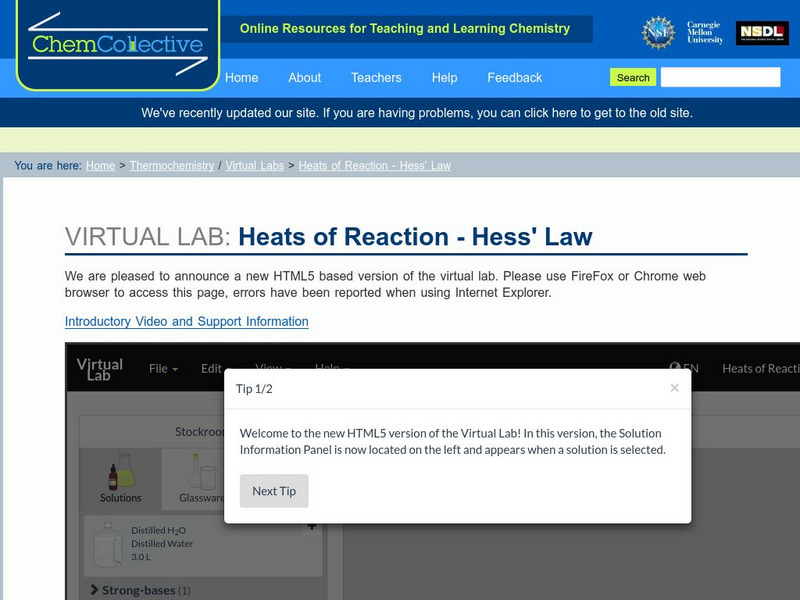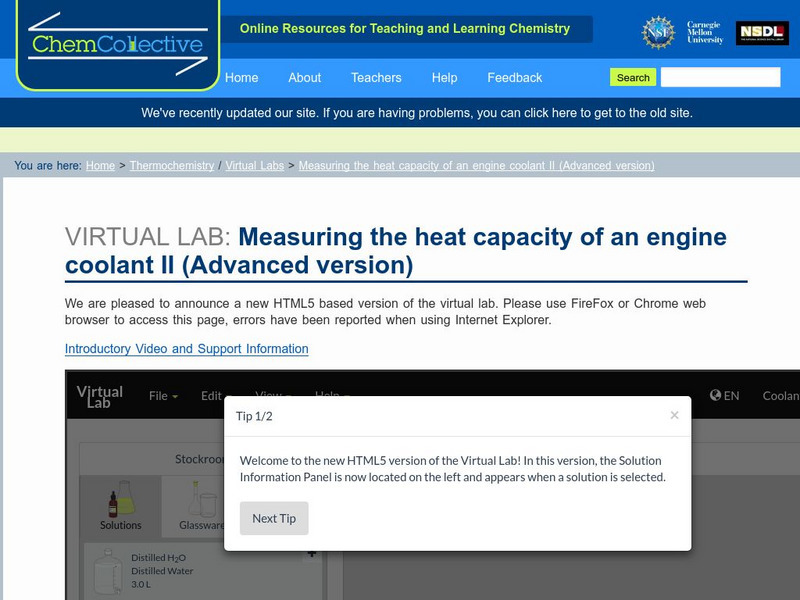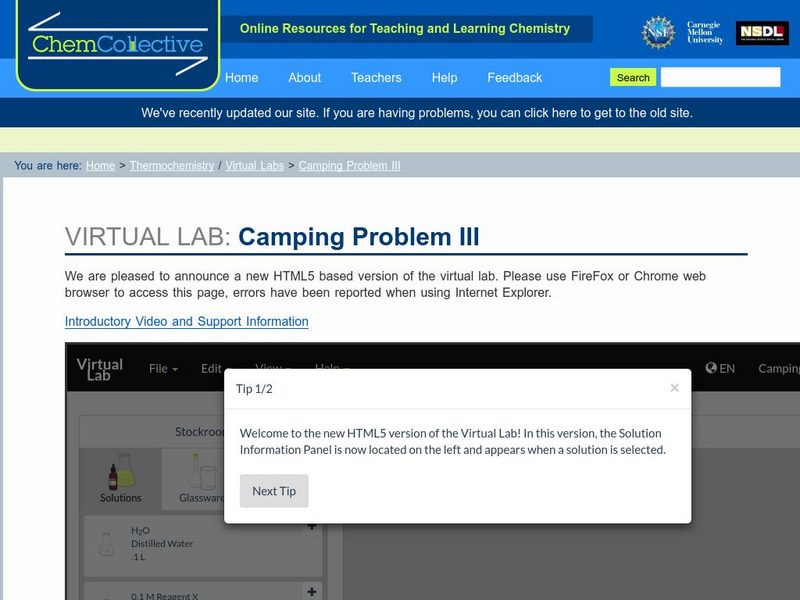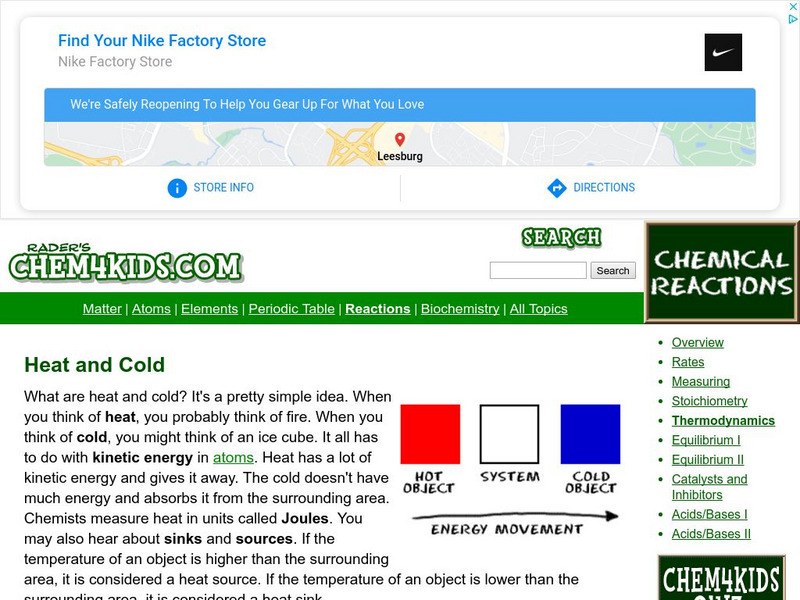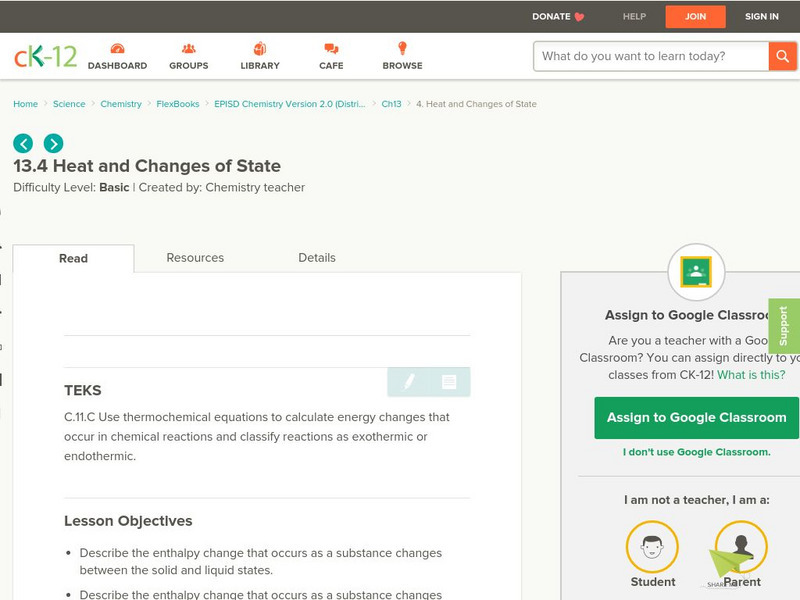Chemistry Collective
Chem Collective: Camping Problem
Measure the enthalpy of a reaction and then create a solution warm enough to cook food.
Carnegie Mellon University
Chem Collective: Meals Ready to Eat
While camping on the Appalachian Trail, a storm dampens all the fire wood and you must design a chemical reaction to heat your meal. In this activity, students design an experiment in the virtual lab to determine the heat of reaction for...
CK-12 Foundation
Ck 12: Hess's Law and Standard Enthalpy of Formation
[Free Registration/Login may be required to access all resource tools.] Students will use Hess's law of heat summation to add chemical reactions together to produce a desired final equation, and then calculate the enthalpy change for...
CK-12 Foundation
Ck 12: Entropy
[Free Registration/Login may be required to access all resource tools.] After identifying the two driving forces behind all chemical reactions and physical processes, students investigate entropy, and predict whether the entropy change...
CK-12 Foundation
Ck 12: Flex Book Textbooks: Chemistry Second Edition
[Free Registration/Login may be required to access all resource tools.] A complete, web-based, multi-media textbook covering a wide variety of Chemistry concepts.
Nobel Media AB
The Nobel Prize: Walther Nernst Biographical
The Nobel e-Museum provides a biography of Walther Nernst, the Nobel Prize-winning German scientist who discovered the third law of thermodynamics.
Chemistry Collective
Chem Collective: Current Collection of Virtual Lab Problems
A collection of over 30 virtual chemistry problems with accompanying interactive activities. Each problem includes a word file for potential differentiation in your classroom.
Chemistry Collective
Chem Collective: Coffee Problem
In this activity, students use knowledge of specific heat capacity to mix together hot coffee and cold milk to create a solution of coffee at a desired temperature. In this randomized problem, each student is given a different final...
Chemistry Collective
Chem Collective: Hot/cold Pack Problem: Part 1
Determine the heat of solution for various salts.
Chemistry Collective
Chem Collective: Hot/cold Pack Problem: Part 2
Based on information from Part 1 of the Hot/Cold Pack Problem, design a hot/cold pack.
Chemistry Collective
Chem Collective: Engine Simulation
This simulation allows students to interact with different components of a complex real world phenomenon. The simulation shown is of a 4-stroke internal combustion engine. The thermodynamic cycle being simulated is the Otto cycle, which...
Chemistry Collective
Chem Collective: Heats of Reaction: Hess's Law
This activity provides a demonstration of Hess's Law using three reactions: the solubility NaOH in water, the solubility NaOH in HCl, and the reaction of a solution of HCl and a solution of NaOH.
Chemistry Collective
Chem Collective: Determining the Heat of Reaction in Aqueous Solution
In this activity, students perform an experiment to determine the heat of a reaction.
Chemistry Collective
Chem Collective: Coffee Problem
Use the virtual lab to determine how much milk to add to hot coffee to reach the desired temperature
Chemistry Collective
Chem Collective: Measuring the Heat Capacity of an Engine Coolant.
As an analytical chemist at a company developing new engine coolants your task is to determine the heat capacity of a newly developed product and then to determine if its heat capacity is greater of less than that of ethylene glycol.
Chemistry Collective
Chem Collective: Measuring the Heat Capacity of an Engine Coolant Ii
Measure and compare the heat capacity of an unknown liquid with an unknown density.
Chemistry Collective
Chem Collective: Camping Problem I
In this part of the MRE scenario, students measure the enthalpy of a reaction.
Chemistry Collective
Chem Collective: Camping Problem Ii
In this part of the MRE scenario, students determine change in the enthalpy of a reaction as the concentration of reactants are varied.
Chemistry Collective
Chem Collective: Camping Problem Iii
In this part of the MRE scenario, students create solutions that when mixed, increase to a certain temperature.
Chemistry Collective
Chem Collective: Atp Reaction: Thermochemistry and Bonding
Determine the enthalpy of the ATP reaction.
Chem4kids
Chem4 Kids: Thermochemistry
This site provides a general overview of thermochemistry, the division of chemistry that deals with temperature in chemical reactions. Content explores what heat and cold really are, the heat and energy around you, and a bit about Lord...
CK-12 Foundation
Ck 12: Heat and Changes of State
[Free Registration/Login may be required to access all resource tools.] Students explore the enthalpy changes that occur as substances change between states, and then calculate the enthalpy change involved in the change of state.
Other
Walther Nernst Memorial
Walther Nernst (1846-1941) discovered the Third Law of Thermodynamics and won the Nobel Prize in Chemistry 1920 in recognition of his work in thermochemistry. Find out more at this memorial website dedicated to the German scientist.
CK-12 Foundation
Ck 12: Heat Flow
[Free Registration/Login may be required to access all resource tools.] In this lesson, students study the difference between reactions that absorb versus release heat as well as how to measure this change in energy.





